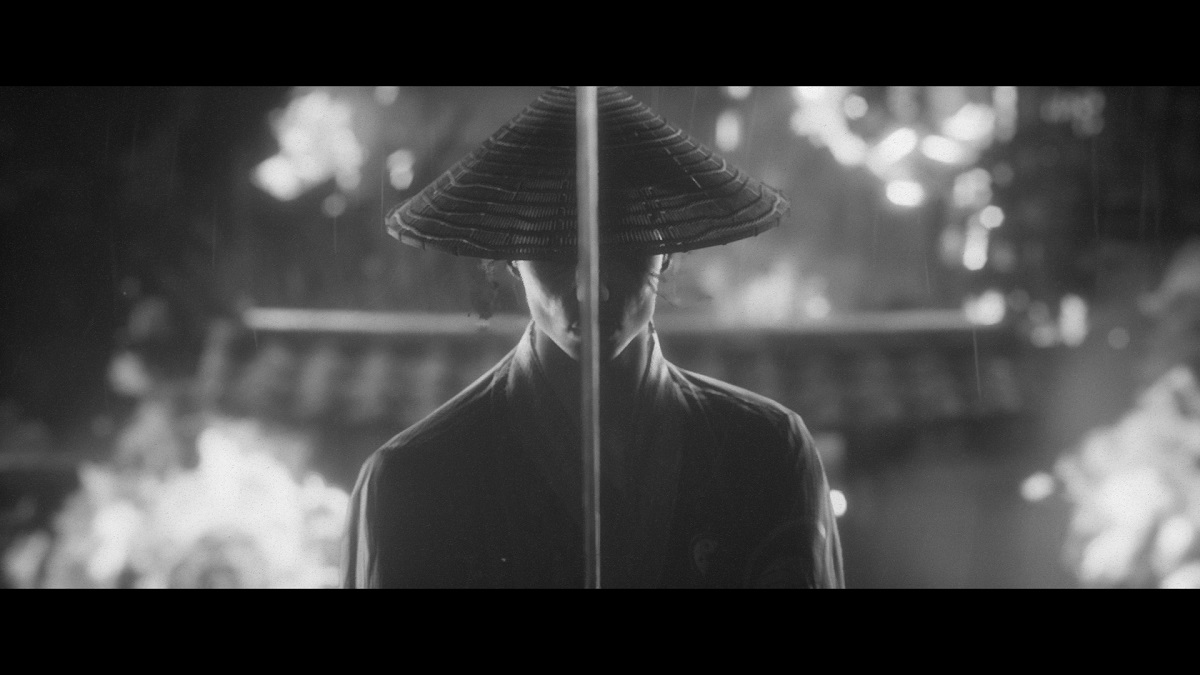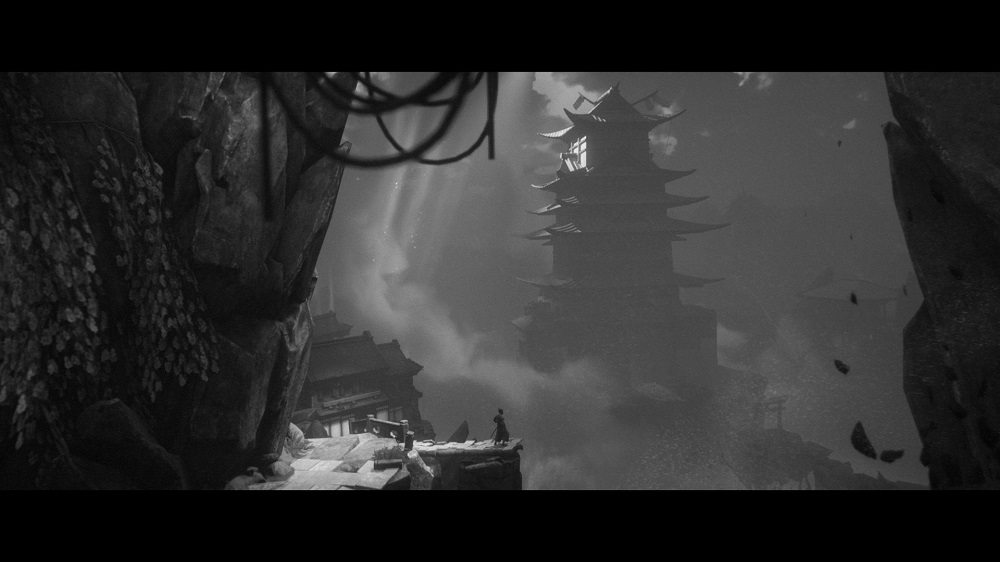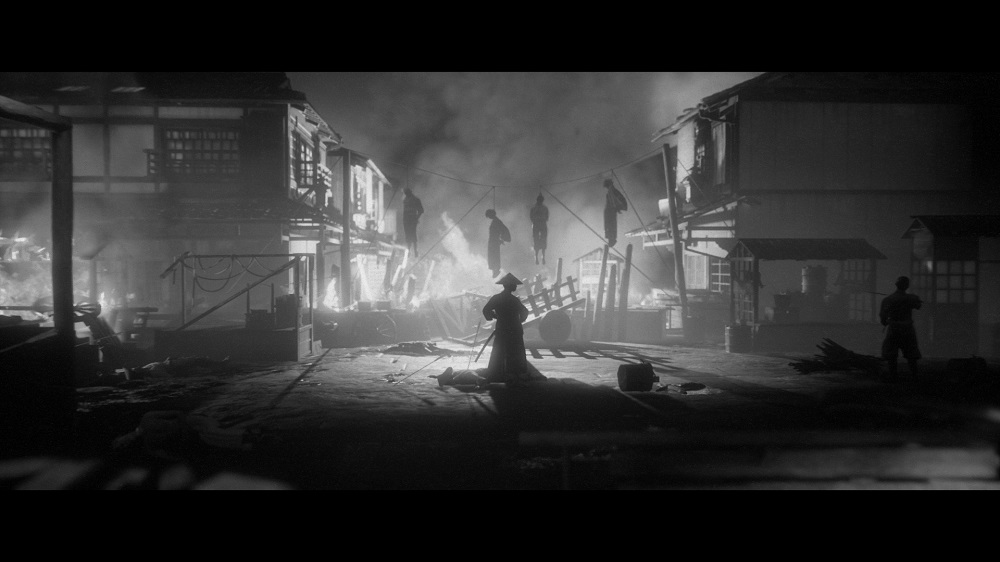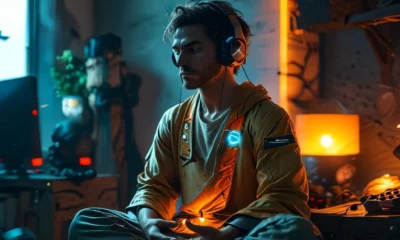Game Reviews
Trek to Yomi is a Polished Homage to Legendary Samurai Films
Trek to Yomi delivers a harrowing and authentic samurai adventure while paying homage to the samurai films of yesteryear.

Trek to Yomi Review
Developer: Leonard Menchiari, Flying Wild Hog | Publisher: Devolver Digital | Genre: Action-Adventure | Platforms: Xbox Series X|S, Xbox One, PlayStation 4/5, PC | Reviewed on: PC
Samurais have always been “cool” in pop culture, but there haven’t been many great representations of them in the video game space. Aside from standouts like Ubisoft’s For Honor and Sony’s Ghost of Tsushima, fans of the time period and samurai aesthetic have largely been underserved. Enter Trek to Yomi, a jaw-dropping cinematic adventure that manages to perfectly blend tight swordplay with film-like story and presentation values.
Inspired by 1950s-1960s Japanese cinema, the art direction of Trek to Yomi is undeniably its most striking feature. A distinct film grain filter (which can be toggled off) and greyscale color pallete evoke the classic samurai films that defined the genre for decades. Though usually villainized in modern gaming, the fixed camera angles here add to the cinematic nature of the presentation and virtually never impede on exploration or combat. What results is an art direction that’s so clean and well-realized that one can’t help but take countless screenshots (several of which you’ll see in this review).

Humble Beginnings
Trek to Yomi’s narrative is as classic as its visual style. The story begins when a young samurai-in-training named Hiroki gets a swordplay lesson interrupted by an attack on his village. Rushing to help fend off the threat and eager to put his skills to use, Hiroki gets his first taste of real combat but experiences a great loss shortly after. Years later, he’s a respected swordsman and gets pulled into a conflict when a neighboring village is ruthlessly attacked by a group of bandits. This quickly turns into a tale of revenge, honor, and upholding vows as Hiroki must travel through Yomi (the afterlife) to come to terms with his past and gain the strength he needs to set things right.
While the plot should be easy to predict for any samurai cinema fan, that doesn’t mean it isn’t well done. Dialogue is consistently strong from both a writing and performance perspective. The grandiose lines delivered during major story moments are certainly impactful, but it’s the simple banter between bandits that really impresses. These typically minor characters do a great of providing bits of story and a sense of place as they’re approached. The Japanese voice acting is strong across the board, particularly when it comes to the cries of pain and grief emanating from survivors of ravaged villages or poor souls stricken by disease. The overall ability to portray different types of atmospheres while being confined to such a limited color scheme is remarkable, especially for an independent developer.
That said, there are some moments that feel a bit hamstrung by either time or budget. For instance, early on Hiroki encounters a bandit in a burning building who’s become trapped under a collapsed beam. He begs for help despite having just killed countless innocents. Hiroki verbally lambasts him, but the bandit can’t be interacted with at all beyond that. It would’ve been much more impactful to have the option of either helping him up or executing him on the spot, but neither is possible. It’s only in moments like these–and when the camera zooms a little too close on faces–where a lack of polish is seen.

The Way of the Samurai
Structurally, Trek to Yomi is a fairly standard action-adventure game. It alternates between side-scrolling for combat and traversal, and more freeform movement for exploring. While progression is largely linear, there are often routes that diverge into two paths, and it’s always worth it to explore both. Trek to Yomi is littered with secrets just waiting to be discovered, and finding them is often a matter of poking around in corners and keeping an eye out for a faint glint. Be it ammo, stamina and health upgrades, or collectibles that offer interesting tidbits on Japanese mythology, scouring every scene before moving on is well rewarded.
It’s no surprise that swordplay is at the core of Trek to Yomi’s combat system, but what is a pleasant surprise is just how tactile and fluid it feels to wield a blade. Maneuvers are split between light and heavy attacks; light attacks are faster but require multiple hits to kill, while heavy attacks are slower but can slay weaker enemies in one strike. There are countless unlockable combos and finishers for players to learn and master, and though the sheer amount eventually borders on overkill (and more suited to a proper fighting game), those looking for combat depth will not be disappointed. This is supplemented by a variety of ranged weapons affiliated with the era including bo-shurikens, a bow and arrow, and a rudimentary firearm. While the bow and arrow and firearm in particular can often one-shot foes and throw the game’s balance off a bit, they’re kept in line via limited ammo that can only be replenished at key points.
Aside from a wealth of combos, what elevates the swordplay beyond simple hack n’ slash is the necessity of parrying. Signified by a momentary gleam of light across a foe’s weapon, the signal to parry is both stylish and readable if you’re focused. The resulting deflection causes the enemy to stumble and briefly opens them up to be slashed, be they bandits or crazed monsters. This means that every encounter must be approached methodically; ignoring the parry is an easy way to get torn to shreds in a matter of seconds (though there is an easy mode that’s much more welcoming to button-mashers if parrying proves too difficult). Trek to Yomi also doesn’t allow players to get too comfortable, sprinkling in enemy types that have a trickier parry to recognize as the campaign progresses. This can border on feeling unfair at times–especially when fighting spirits, whose corporeal bodies and swords are the same shade as the glint on their weapons–but by and large it’s rewarding.
If there’s one major knock against Trek to Yomi, it’s the lack of ability upgrades. The titular focus of the story is traveling through the underworld in search of greater self-understanding and strength to avenge Hiroki’s loved ones. However, there were many times during battle when I found myself sorely wishing for a faster sword swing speed and dodge speed. It seems like a missed opportunity to not include core upgrades like these that directly reflect how much more capable Hiroki has become over the course of his journey. If health, stamina, and ammo capacity can all be improved, why not fighting ability?

Searching for a Greater Purpose
Though Trek to Yomi overstays its welcome a bit (particularly during some repetitive sequences in Yomi itself), seeing how the journey of Hiroki played out remains a driving force throughout. This is partially due to the ability to choose the path he goes down. At several pivotal moments throughout the story the game will pause and present three options: a path of love, a path of duty, and a path of revenge. These shape Hiroki’s motivations and, ultimately, what he ends up doing in Trek to Yomi’s final moments. Since these same options pop up multiple times, however, it’s unclear what happens if you choose a different path each time, and the lack of a chapter select means that you’ll have to replay the campaign in its entirety to find out. Nonetheless, being able to take a vengeful route and gradually see Hiroki shed his morals and devolve into a man willing to become powerful by any means necessary wasn’t just satisfying–it was believable.
Trek to Yomi succeeds as both a memorable adventure and a diligent homage to the peak of samurai cinema. The attention to detail in terms of presentation in incredible–there truly isn’t another game that nails this aesthetic this well. While more modern gamers may be disappointed by the lack of camera control, Trek to Yomi handles it well and maintains a challenging experience for all the right reasons. Devolver Digital has made a name for itself as a publisher with one of the best eyes for talent in the industry, and Trek to Yomi proves that’s not changing any time soon.
For more on Trek to Yomi read our interview with the creative director.

-

 Features4 weeks ago
Features4 weeks agoDon’t Watch These 5 Fantasy Anime… Unless You Want to Be Obsessed
-

 Culture3 weeks ago
Culture3 weeks agoMultiplayer Online Gaming Communities Connect Players Across International Borders
-

 Features3 weeks ago
Features3 weeks ago“Even if it’s used a little, it’s fine”: Demon Slayer Star Shrugs Off AI Threat
-

 Features2 weeks ago
Features2 weeks agoBest Cross-Platform Games for PC, PS5, Xbox, and Switch
-

 Game Reviews4 weeks ago
Game Reviews4 weeks agoHow Overcooked! 2 Made Ruining Friendships Fun
-

 Features3 weeks ago
Features3 weeks ago8 Video Games That Gradually Get Harder
-

 Game Reviews4 weeks ago
Game Reviews4 weeks agoHow Persona 5 Royal Critiques the Cult of Success
-

 Features1 week ago
Features1 week agoThe End Is Near! Demon Slayer’s Final Arc Trailer Hints at a Battle of Legends
-

 Features2 weeks ago
Features2 weeks agoDon’t Miss This: Tokyo Revengers’ ‘Three Titans’ Arc Is What Fans Have Waited For!
-

 Uncategorized3 weeks ago
Uncategorized3 weeks agoSleep Meditation Music: The Key to Unwinding
-

 Guides2 weeks ago
Guides2 weeks agoHow to buy games on Steam without a credit card
-

 Game Reviews2 weeks ago
Game Reviews2 weeks agoFinal Fantasy VII Rebirth Review: A Worthy Successor?






















